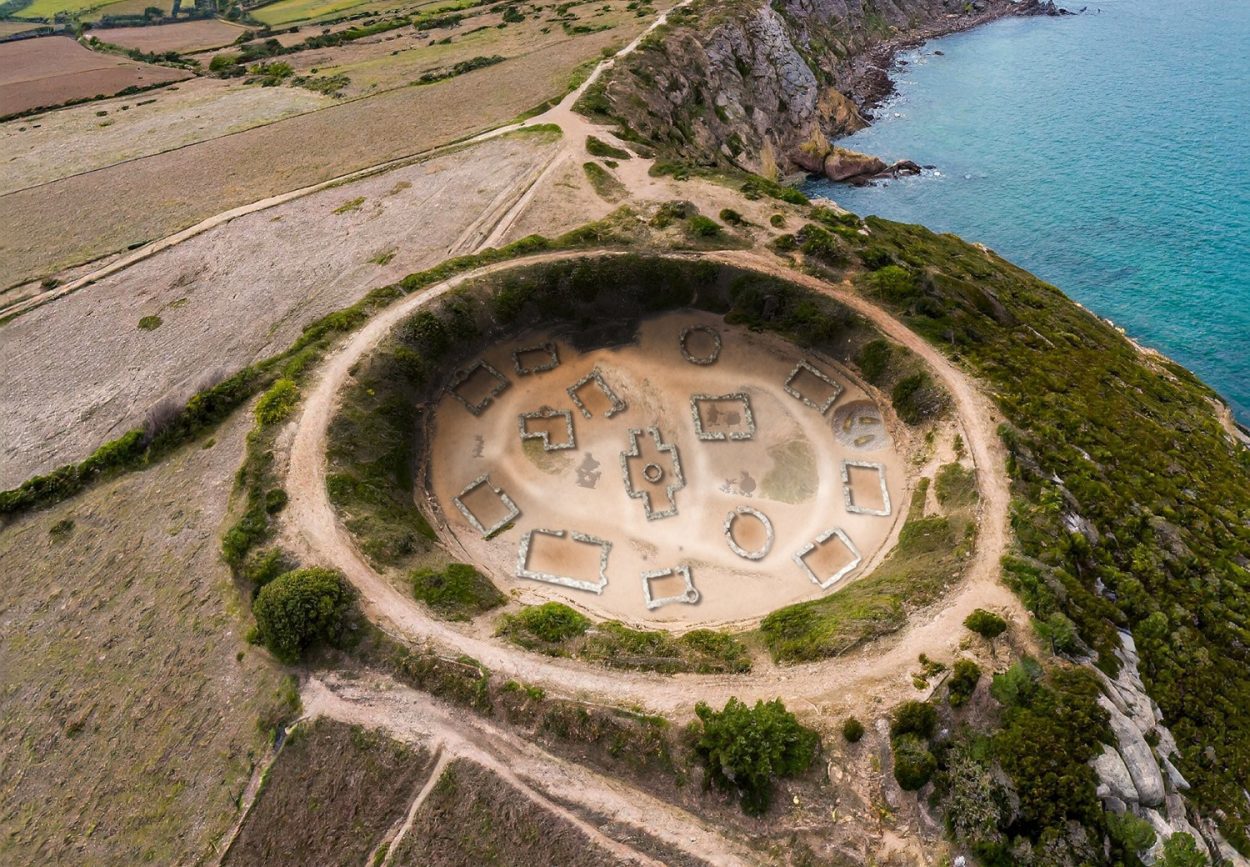A team of archaeologists have uncovered a circular shaped Iron Age village in the Côtes d’Armor using advanced satellite imaging technology.
*
The discovery was made using light detection and ranging (LiDAR), a method of remote sensing with light in the form of a pulsed lasers to measure ranges (variable distances) to the Earth.
The differences in the laser return times and wavelength measurements can be used to compile a 3D digital map of the landscape and remove obscuring features.
Using a LiDAR system developed by INRAE (National Institute for e-realistic Archaeological Research), archaeologists have discovered traces of a Gallic village at Cap d’Erquy on the coast of the Côtes d’Armor, France.
The village was inhabited by the Gauls, an Iron Age people that emerged around the 5th century BC in Gallia (encompassing present-day France). The Gauls comprised numerous tribes (known as toutās), many of which constructed extensive fortified settlements called oppida (such as Bibracte) and issued their own coinage.
Gaul never experienced unity under a sole ruler or centralized government. However, the Gallic tribes demonstrated the ability to unite their forces for large-scale military campaigns. The Romans conquered Gaul under the command of Julius Caesar during the Gallic Wars (58–50 BC).
According to a press statement by the Côtes d’Armor Departmental Council, archaeologists have found traces of around twenty roundhouses which were surrounded by a circular defensive rampart. Initial estimates suggest that the village was inhabited between the 8th and 5th centuries BC.
“This is an exceptional discovery which allows us to better understand the daily life of the Gauls during the Iron Age. This technology opens the way to major new discoveries and makes it possible to explore archaeological sites inaccessible through traditional excavations,” said Jean-Yves Peskebrel, archaeologist at INRAE.
Header Image Credit : INRAE
Sources : Côtes d’Armor Departmental Council





